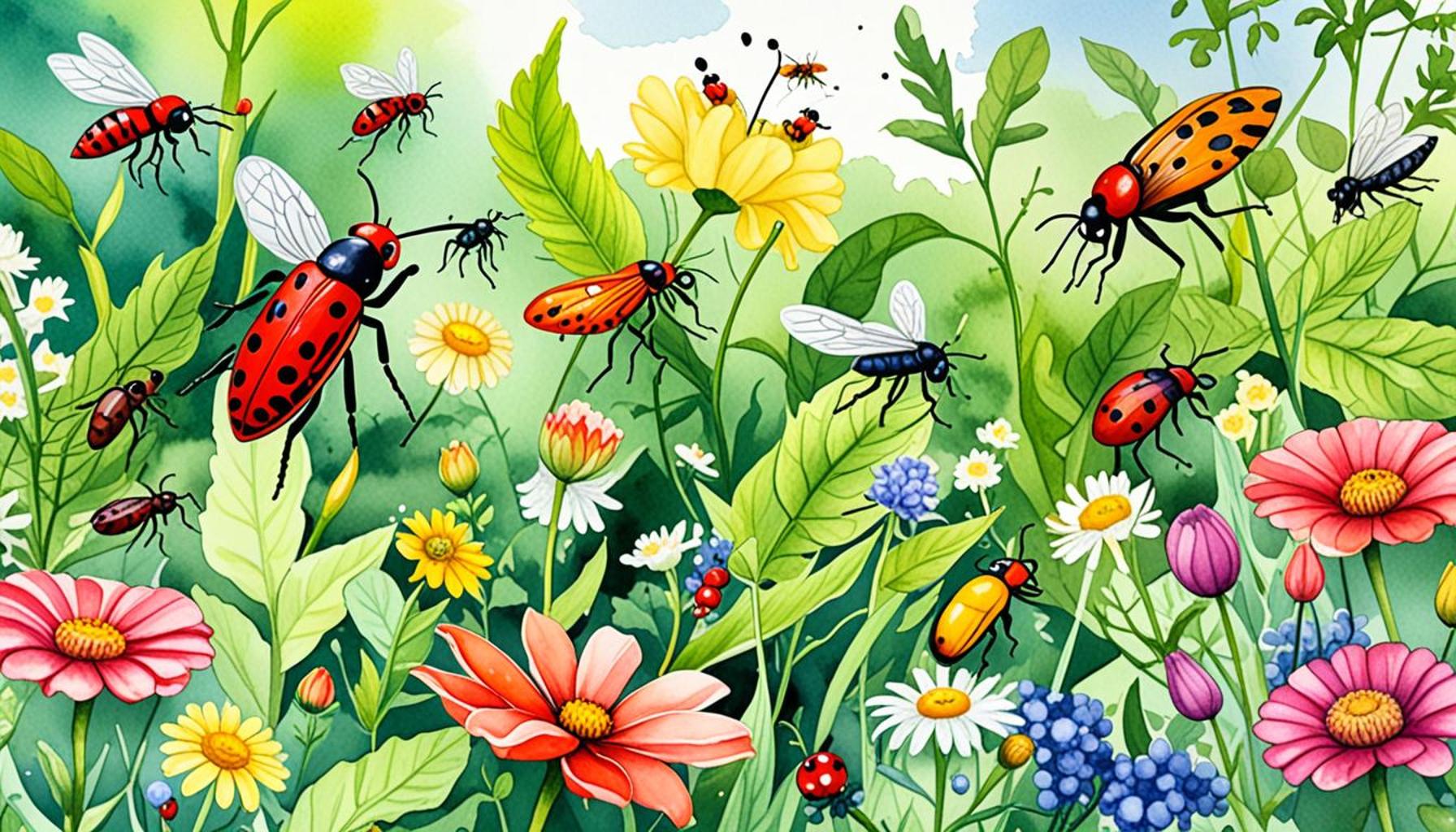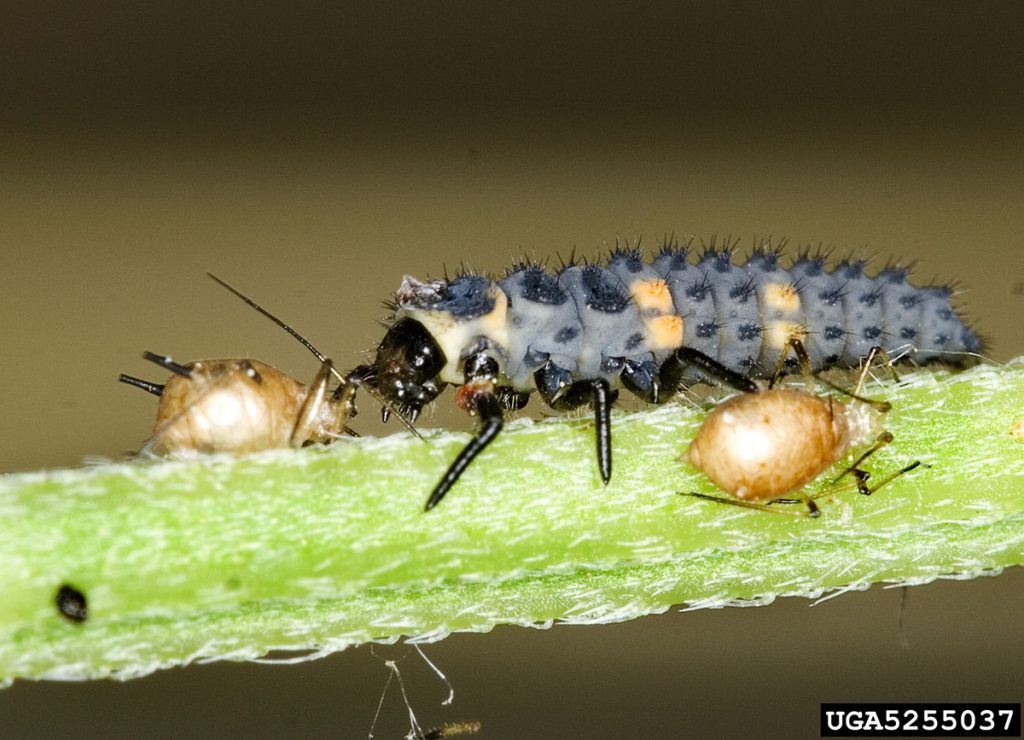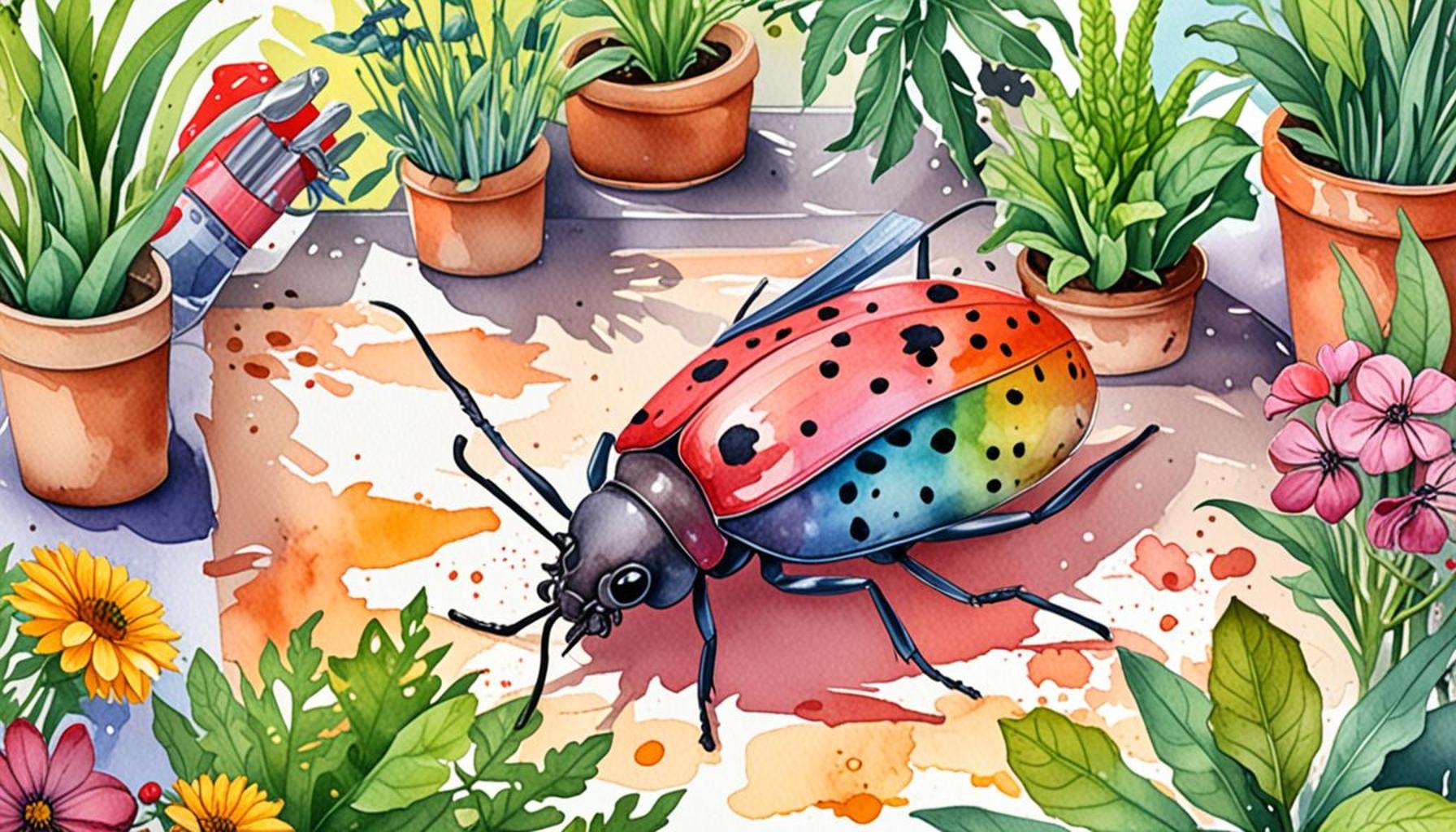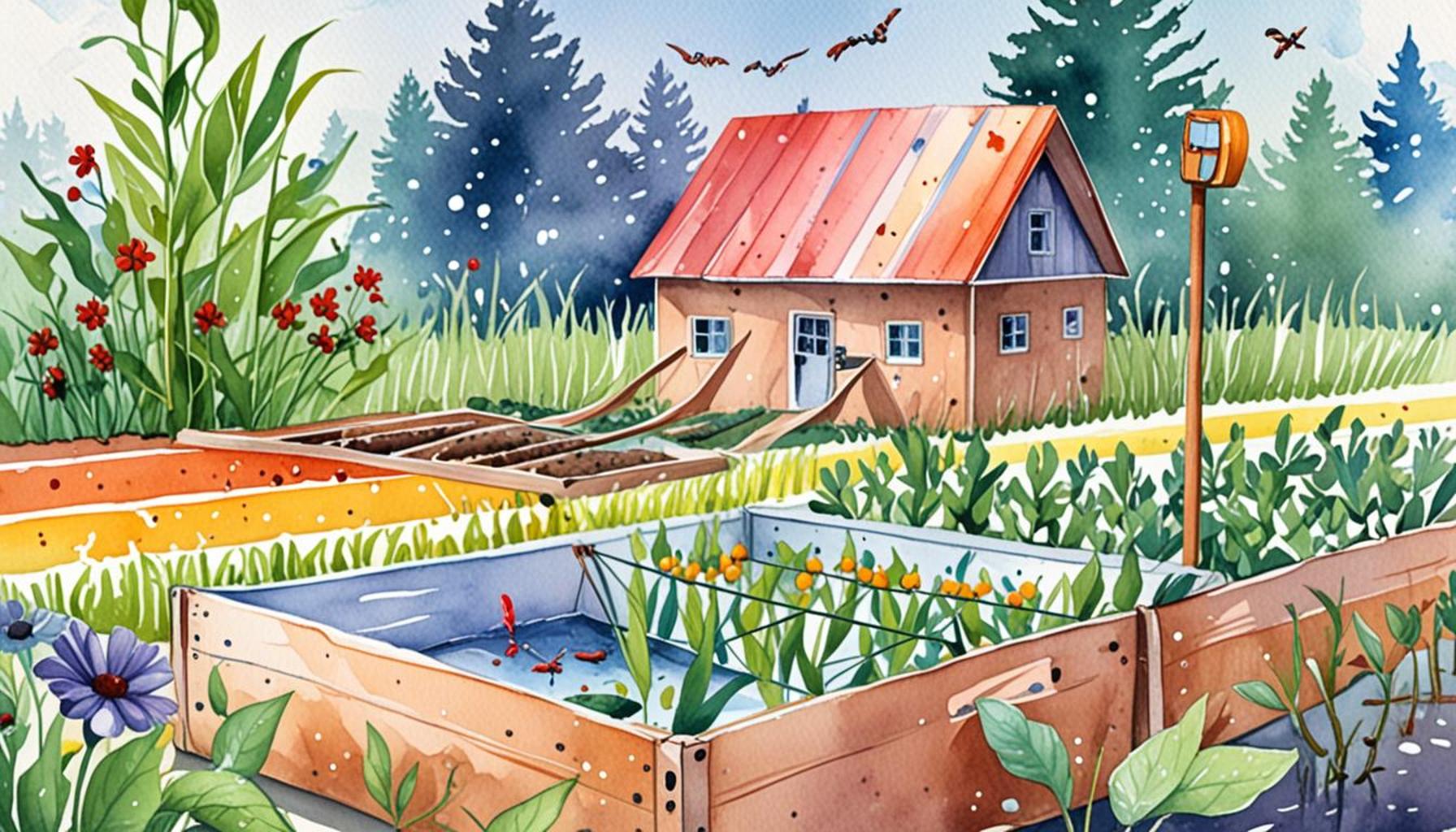The Role of Beneficial Insects in Pest Control in Home Gardens

Unveiling Nature’s Allies
In the vibrant world of home gardening, many struggle with unwanted guests: pests. Yet, there’s a lesser-known faction that can tip the balance in favor of garden health—beneficial insects. These tiny allies play an essential role in controlling pest populations, creating a harmonious environment for your plants, and encouraging sustainable gardening practices.
Why Beneficial Insects Matter
Understanding the significant contributions of beneficial insects to your garden can vastly enhance your gardening experience. These insects serve vital roles through various mechanisms, including:
- Natural Predators: Species like ladybugs, also known as ladybird beetles, and lacewings feast on aphids, spider mites, and other harmful insects that threaten your plants. For example, a single ladybug can consume up to 5,000 aphids in its lifetime, making it one of the most efficient pest controllers in a garden.
- Pollinators: Bees, particularly honeybees and native solitary bees, are critical for plant reproduction. They transfer pollen from one flower to another, ensuring not only the production of fruits and seeds but also the overall vitality of your garden. According to the USDA, about one-third of the food produced in the U.S. relies on pollination from these industrious insects.
- Soil Health Boosters: Earthworms and specific beetles, such as the dung beetle, aerate the soil, enhancing its structure and nutrient availability. This aeration provides better water infiltration and root growth, contributing to robust plant health. Healthy soil fosters a thriving ecosystem that nurtures plant growth.
Recognizing the vital roles these insects play can transform your gardening approach. Instead of reaching for chemical pesticides, many gardeners are now discovering the benefits of fostering a rich ecosystem where beneficial insects can thrive. Planting a diverse array of flowers and herbs provides habitats and food sources, creating a sanctuary for these essential allies.
Key Benefits of Beneficial Insects
Integrating beneficial insects into your home garden offers numerous advantages:

- Eco-Friendly Pest Control: These natural predators significantly reduce reliance on chemical pesticides, making your gardening effort more environmentally friendly. As more people become aware of the hazards of synthetic chemicals, the appeal of using beneficial insects as an alternative solution is growing.
- Enhanced Biodiversity: Promoting diversity among plant and insect life leads to a balanced ecosystem. This richly interconnected web boosts the resilience of garden plants against pests and diseases, ensuring a stable and effective gardening environment.
- Long-Term Solutions: By establishing sustainable pest management practices that incorporate beneficial insects, gardeners can enjoy long-term garden health. This approach not only addresses current pest problems but also lays the foundation for future gardening success.
Delving deeper into the world of beneficial insects reveals a wealth of knowledge that can revolutionize your gardening practices. These tiny creatures represent an ecological army, ready to work in your favor. Stay tuned as we explore practical strategies to attract and support these remarkable allies! Understanding which plants to grow and how to provide shelter will be crucial steps toward creating a flourishing garden ecosystem.
DISCOVER MORE: Click here to learn about proper drainage techniques
Harnessing Nature’s Clean-Up Crew
The importance of beneficial insects in home gardens extends far beyond mere aesthetics or surface-level interactions. By diving deeper into their world, we uncover a complex tapestry of interactions that significantly enhance garden productivity and health. These insects act as nature’s clean-up crew, efficiently managing pest populations while fostering a healthy ecosystem. Recognizing their roles can inspire gardeners to embrace a more organic approach, ultimately contributing to sustainability and environmental conservation.
Food Web Dynamics
The marvel of beneficial insects lies in their positions within the food web. These insects not only prey on harmful pests but also support a variety of other organisms, creating a balanced ecosystem that can withstand pest pressure. Various categories of beneficial insects can be identified, including:
- Predators: In addition to ladybugs and lacewings, other predators like predatory wasps and ground beetles target pests such as caterpillars and slugs. Some species lay their eggs within or on the bodies of other insects, ensuring their young have a readily available food source.
- Parasitoids: These sophisticated insects, like certain wasps, invade pests such as aphids or whiteflies, often leading to their demise while their larvae develop. This targeted approach is akin to introducing the lion to prey in the ecosystem, allowing for further population control without numerous collateral effects.
- Scavengers: Apart from being predators, insects like rove beetles and some ants also perform essential tasks by breaking down organic matter. By decomposing dead plant material, they enrich the soil, providing vital nutrients for plants and increasing fertility.
Understanding the intricacies of these roles reveals the interconnectedness of life within the garden. For instance, research suggests that maintaining a healthy population of these beneficial insects can lead to natural outbreaks of pest control. When the balance is tipped, and harmful pest populations rise, these creatures respond in kind by increasing their numbers, thus curbing pest dominance without human intervention.
Managing Pest Populations Naturally
In a world increasingly concerned with chemical pesticide use, beneficial insects emerge as a safe and effective alternative in pest management strategies. By fostering those natural allies, gardeners can achieve the dual benefit of protecting their plants while reducing the environmental impact of gardening. Key practices to encourage beneficial insects include:
- Plant Diversity: Incorporating a variety of flowering plants, herbs, and native species can create habitats that attract and sustain beneficial insects. Flowers like marigolds, dill, and yarrow not only beautify the garden but also serve as food sources for many beneficial species.
- Minimizing Tillage: Reducing soil disturbance helps protect the habitats of beneficial insects. Conserving the soil structure enables the necessary environment for insects like ground beetles to thrive, allowing them to perform their natural pest control functions.
- Creating Habitat: Installing insect hotels or providing undisturbed areas of the garden allows beneficial insects to find shelter and reproduce. These habitats enhance the likelihood of maintaining a stable ecosystem throughout the seasons.
As we delve further into the synergy between plants and beneficial insects, we unveil the potential of harnessing these relationships to enhance the effectiveness of our gardening endeavors. To truly foster this dynamic, understanding the intricate details of beneficial insects and their preferences could transform not only our gardens but our approach to eco-friendly horticulture as well.
| Category | Description |
|---|---|
| Natural Pest Predators | Beneficial insects like ladybugs and lacewings effectively reduce harmful pest populations. |
| Pollination | These insects also enhance pollination rates, benefiting your plant yields and overall garden health. |
| Soil Health | Certain beneficial insects improve soil organic matter, essential for robust plant growth. |
In the realm of home gardening, the presence of beneficial insects is not merely a bonus; it is an essential component to sustainable pest management. These insects play a pivotal role in reducing the reliance on chemical pesticides, which can be harmful to ecosystems. For instance, ladybugs, known for their vibrant coloration, are voracious predators of aphids, a common garden pest. Their mere presence can significantly cut down pest populations without harming beneficial fauna.Moreover, predatory wasps inject their eggs into pests like caterpillars, effectively controlling their numbers while remaining harmless to the plants themselves. By encouraging a diverse and balanced ecosystem in the garden, beneficial insects not only help control pests but also foster a habitat that enhances plant vitality.Did you know that many beneficial insects also contribute to soil health? For instance, earthworms aerate the soil, improving its structure and moisture retention. This is crucial for growing robust vegetables and flowers. By integrating these hardworking insects into your garden approach, you can create a self-regulating environment where plants thrive, pests diminish, and nature maintains its harmonious balance.To learn more about how to attract and maintain beneficial insect populations in your home garden, delve into specific strategies and plant choices that maximize these advantages. Your garden will flourish while also supporting local biodiversity, positively impacting the environment beyond your backyard.
DISCOVER MORE: Click here to learn the differences
Building an Ecosystem of Resilience
The presence of beneficial insects not only offers a natural solution to pest control but also contributes to building a resilient garden ecosystem. The adaptability of these insects plays a crucial role in how gardens respond to changing conditions, making them essential allies for sustainable gardening. Let’s dive deeper into specific interactions and practices that promote the effectiveness of beneficial insects in the home garden.
Sustaining Pollinators for Crop Yields
Beneficial insects extend beyond mere pest control; many of them, especially pollinators like bees and butterflies, contribute significantly to enhancing yields in fruit and vegetable gardens. According to the Pollinator Partnership, about one-third of the food consumed relies on pollination, underscoring the vital role these insects play. For instance, by integrating flowering plants, such as sunflowers and clover, alongside your vegetable patches, gardeners can attract pollinators that ensure better fertilization of crops like tomatoes and squash, leading to larger yields.
Understanding Insect Life Cycles
Knowledge of the life cycles of beneficial insects can greatly aid gardeners in creating welcoming environments that support them. Many beneficial insects begin their life cycle as larvae, which can be particularly voracious consumers of pests. For example, the larvae of lacewings are dubbed “aphid lions” due to their appetite for aphids. When gardeners recognize the critical stages of these insects, they can make informed decisions to preserve their lives. Avoiding indiscriminate pesticide applications during these periods can therefore create a thriving environment for beneficial insects to establish their populations.
Natural Habitat Creation
Creating a natural habitat within a garden can significantly boost the survival rate of beneficial insects. Gardeners can set aside small areas of the garden for native plants and wildflowers, which provide nectar and pollen throughout the growing season. Additionally, leaving some plant residues and brush piles, while they might seem untidy, allows beneficial insects to take refuge during unfriendly weather. These actions not only create habitats but also increase diversity, making the garden less susceptible to pest invasions.
Companion Planting
Companion planting is an age-old practice that leverages the natural relationships between plants and insects. By strategically placing certain plants together, gardeners can enhance the effectiveness of beneficial insects. For instance, planting geraniums near vegetable crops not only deters harmful pests like nematodes but also attracts beneficial insects such as hoverflies. This not only aids in pest control but propels a healthier growth environment for the main crops.
The Role of Education and Community
Education plays a pivotal role in harnessing the benefits associated with beneficial insects. Community gardening initiatives and local workshops can educate homeowners on the significance of these insects. Programs that promote attracting and preserving beneficial insect populations not only improve garden vitality but also foster stronger community ties through shared knowledge and experiences. Moreover, local extension services often offer resources and guidance, helping gardeners make informed decisions on appropriate pest management approaches tailored to their specific environment.
Creating an atmosphere where beneficial insects flourish is a conscientious step toward sustainable gardening practices. As gardeners learn to recognize, attract, and support these critical allies, the resilience of their gardens grows, leading to not only increased productivity but also vibrant ecosystems that benefit the broader environment. Each small change and mindful practice can elevate the garden experience into a rich tapestry of growth, learning, and stewardship.
DISCOVER MORE: Click here to enhance your gardening skills
Conclusion: Embracing the Benefits of Nature’s Allies
In conclusion, the role of beneficial insects in pest control within home gardens is an invaluable asset for both novice and experienced gardeners alike. By fostering an environment that encourages the presence of these insects, homeowners can not only reduce their reliance on chemical pesticides but also promote a balanced ecosystem that enhances plant health and productivity. The intricate relationships between plants and beneficial insects underscore the importance of biodiversity—the greater the variety, the more resilient the garden.
Understanding the life cycles of insects, implementing companion planting, and creating natural habitats are just a few tactics that can significantly amplify the effectiveness of these vital allies. For instance, actively supporting pollinators like bees not only aids in the pollination of fruits and vegetables but also paves the way for bountiful harvests, demonstrating how interconnected our gardening practices truly are.
Furthermore, education and community involvement enrich our understanding of these ecological processes, furthering initiatives that can lead to sustainable gardening solutions. With ready access to resources and local expertise, every garden enthusiast has the potential to contribute to the resurgence of beneficial insects in their personal green spaces.
As we embrace the intricate web of life that exists in our gardens, we provoke a profound shift in how we perceive pest management. By celebrating and nurturing beneficial insects, we cultivate not only a healthier garden but also a healthier planet. Each garden becomes a testament to our stewardship of nature, showcasing the remarkable synergy that emerges when we harmonize with our insect friends.


